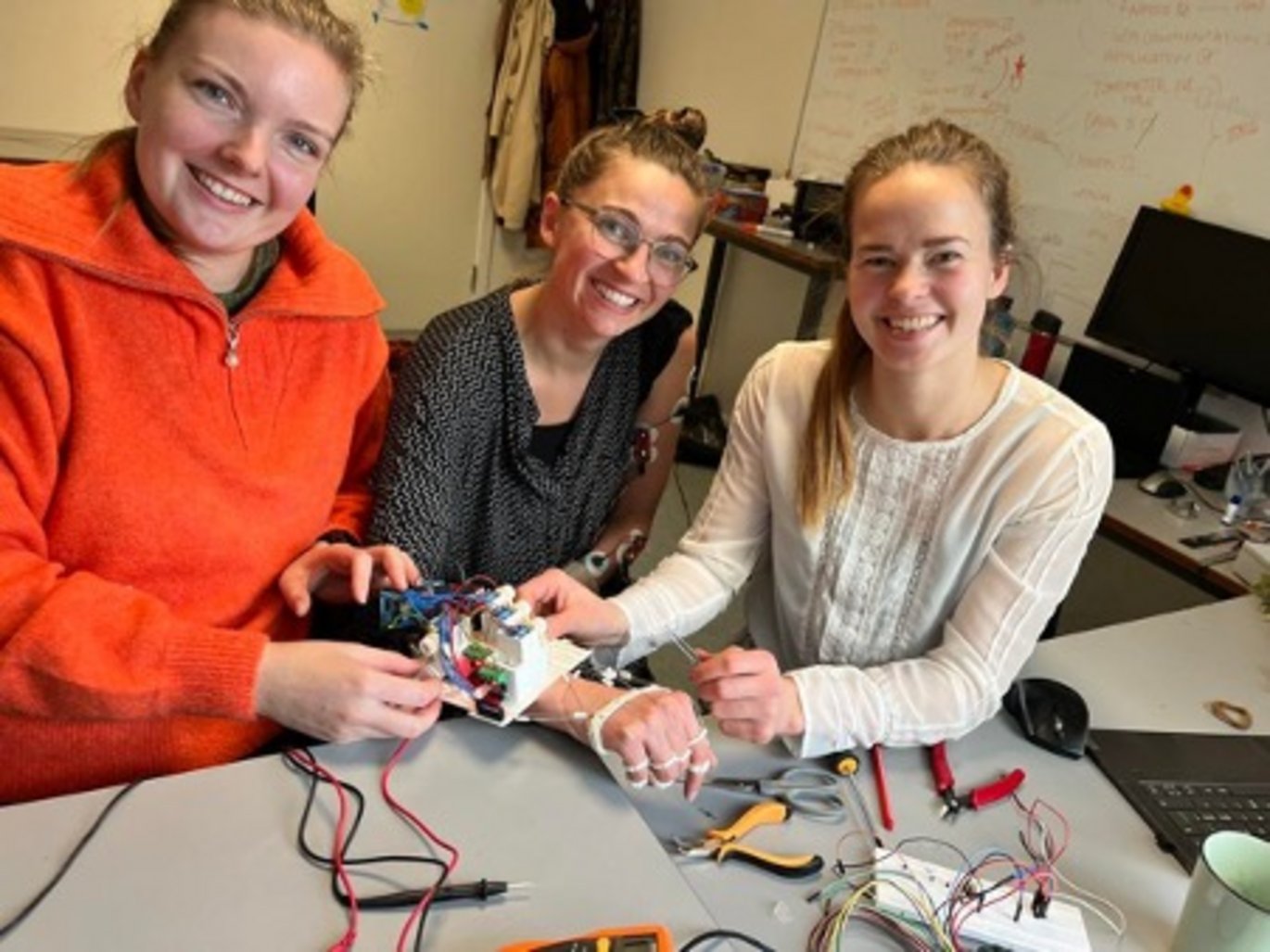Students impress with a muscle-controlled exoskeleton
A new type of exoskeleton controlled by signals from any well-functioning muscles can help people with paralysis or functional impairments.

It looks like five finger rings and a bracelet printed in 3D with thin wires. Cables extend up the arm to electrodes on the shoulder. The electrodes send signals to a miniature computer, and then the entire system begins to move.
The limp hand is transformed: it picks up a key, grasps a water bottle and shakes hands.
We are at the ORBIT at the Department of Electrical and Computer Engineering, Aarhus University. Three engineering students are in the middle of the crucial and final user test. They have invited test persons with various forms of muscular functional impairment to participate in the test.
A young man is paralysed from the neck and down after a skiing accident. His reactions are unmistakeable when he moves his fingers for the first time in the exoskeleton.
"It's really moving, and it feels so incredible to have created something that works and that can help other people. The user test went well and we received a lot of input for improvements,” says Rikke Laugesen, who is a student on the Bachelor of Engineering programme in Healthcare Technology.
Inspired by the body's anatomy
The idea with the exoskeleton is to put it on in the morning and take it off before going to bed. It can be adapted to suit the individual user's specific functional impairment and motoric challenges, but the biomechanical system will be the same and can in principle be controlled by any well-functioning muscle.
"We used human anatomy as the inspiration for the exoskeleton, and we tried to mimic how tendons are attached to bones and muscles, and how movements are controlled by neural connections from the brain to the body," says Henriette Aamand Holm.
The current prototype works for arms and hands, and it can perform simple gripping with help from a healthy muscle, a small computer and four small engines.
Healthy muscles control the hand
Paralysis in the hands means that there is little to no muscle function due to illness or damage to the muscles, nerves or central nervous system.
The exoskeleton registers so-called electromyographic signals (EMG) from a random healthy muscle and then uses those signals to control the movements of fingers and activate grip.
"Of course, using muscle signals to control the specific movements of the exoskeleton requires a lot of practice and getting used to. But the brain has a fantastic ability to adapt, and in time, it’ll feel completely natural and intuitive to use your fingers by tightening your shoulder," says Sabrina Mittag Nielsen.
The three students have been working on the exoskeleton since the summer holidays, and even they are amazed at how well it works.
"We used a very simple principle, and a technology that is so smart that it can be adapted to the individual needs of users. Our hope is that we can help people with hand paralysis perform basic everyday tasks such as eating, drinking, and answering the phone, which will increase their independence and improve their quality of life,” says Henriette Aamand Holm.
The group is now considering whether they should continue working on the exoskeleton in their own business. They want to add more electrodes, which will increase the different types of grips and they are also looking at new types of sensors that can improve signal processing. In the long term, they aim to integrate the electrodes into clothing to increase the comfort level for users.
